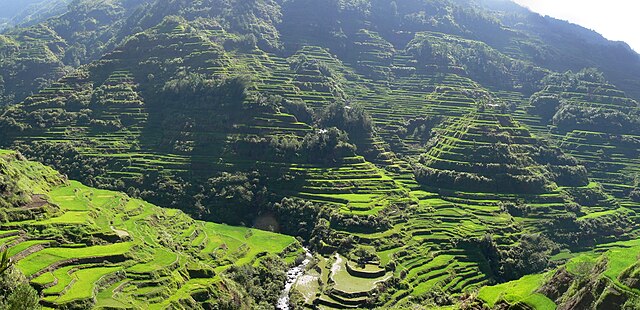Subak is the water management (irrigation) system for the paddy fields on Bali island, Indonesia. It was developed in the 9th century. For the Balinese, irrigation is not simply providing water for the plant's roots, but water is used to construct a complex, pulsed artificial ecosystem that is at the same time autonomous and interdependent. The system consists of five terraced rice fields and water temples covering nearly 20,000 hectares. The temples are the main focus of this cooperative water management, known as subak.
Balinese altar at Rice terraces of Gunung Batukaru
Jatiluwih Rice Terraces
Lake Batur
Ulun Danu Batur Temple
A paddy field is a flooded field of arable land used for growing semiaquatic crops, most notably rice and taro. It originates from the Neolithic rice-farming cultures of the Yangtze River basin in southern China, associated with pre-Austronesian and Hmong-Mien cultures. It was spread in prehistoric times by the expansion of Austronesian peoples to Island Southeast Asia, Southeast Asia including Northeastern India, Madagascar, Melanesia, Micronesia, and Polynesia. The technology was also acquired by other cultures in mainland Asia for rice farming, spreading to East Asia, Mainland Southeast Asia, and South Asia.
Banaue Rice Terraces of Luzon, Philippines, carved into steep mountainsides
Taro fields (loʻi) in Hanalei Valley, Kaua'i, Hawaii
Paddy field placed under the valley of Bandung, Indonesia
Farmers planting rice in Cambodia








